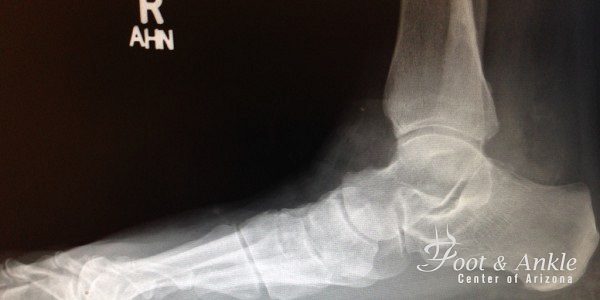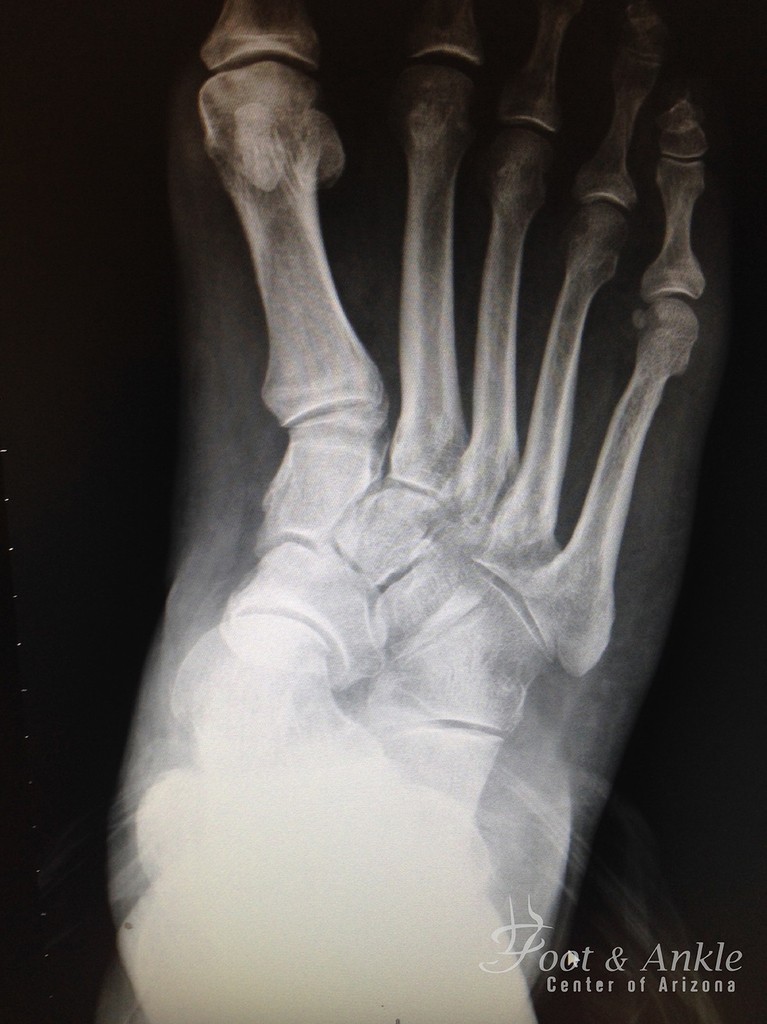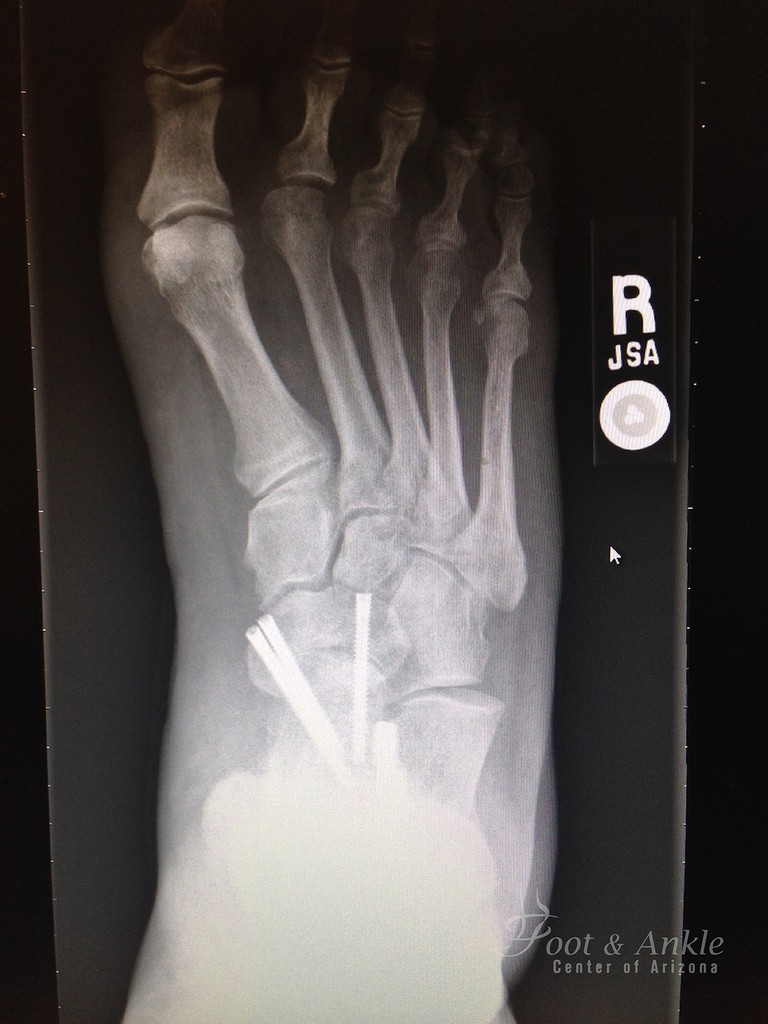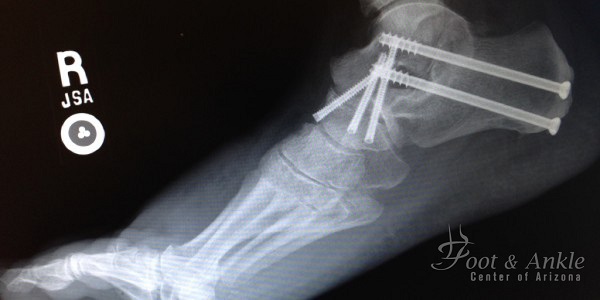Correction of Painful Flatfoot Deformity
Correction of Painful Flatfoot Deformity
Adult acquired flatfoot deformity is the most common type of flatfoot which requires surgical correction. Commonly it is secondary to the loss of the function of the arch tendon called the Posterior Tibial tendon. The progressive weakening of the tendon allows the foot to collapse and the ankle to tilt inward placing significant stresses on the inside of the foot, ankle, and knee. This flatfoot deformity progressively worsens and can lead to arthritis of the foot and ankle.
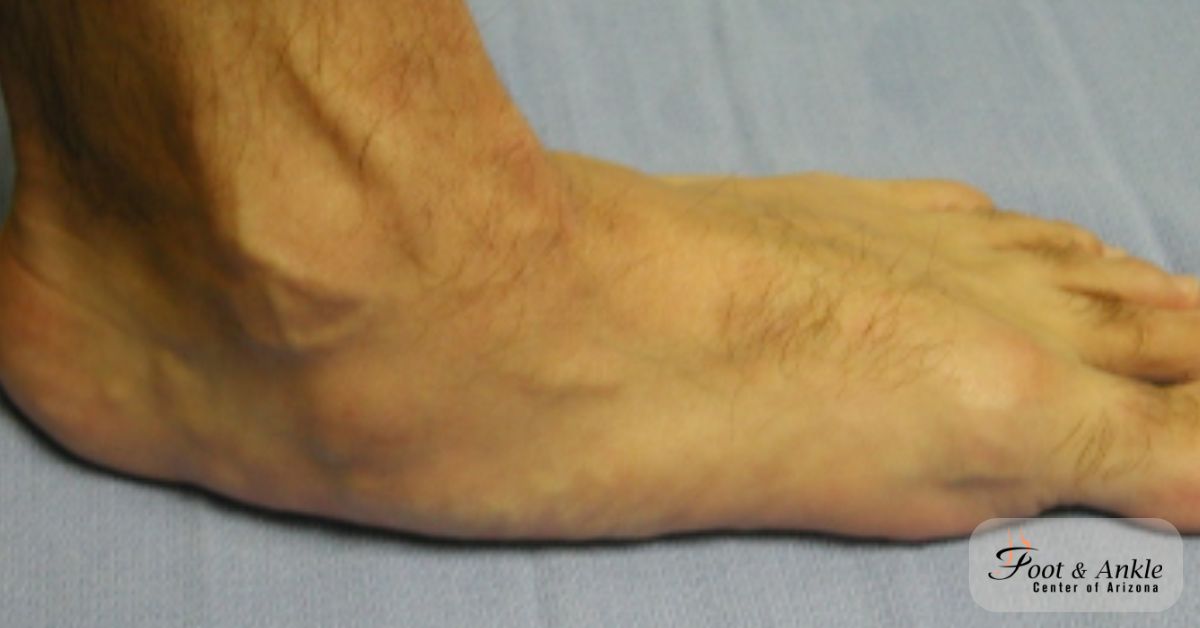
Common treatments include bracing, custom orthotic therapy, shoe changes and activity modifications. When these treatment fail to adequately help the foot and ankle condition surgery to improve the foot alignment and function can be performed.
When daily limitations and pain are present surgery to realign the foot and ankle is performed. Surgery is performed by re-balancing the foot, strengthening the weakened tendon, and lengthening muscle of the short Achilles tendon.
When surgery is performed patients are commonly immobilized in a cast and after the surgery has healed to allow weight bearing placed into a fracture boot.
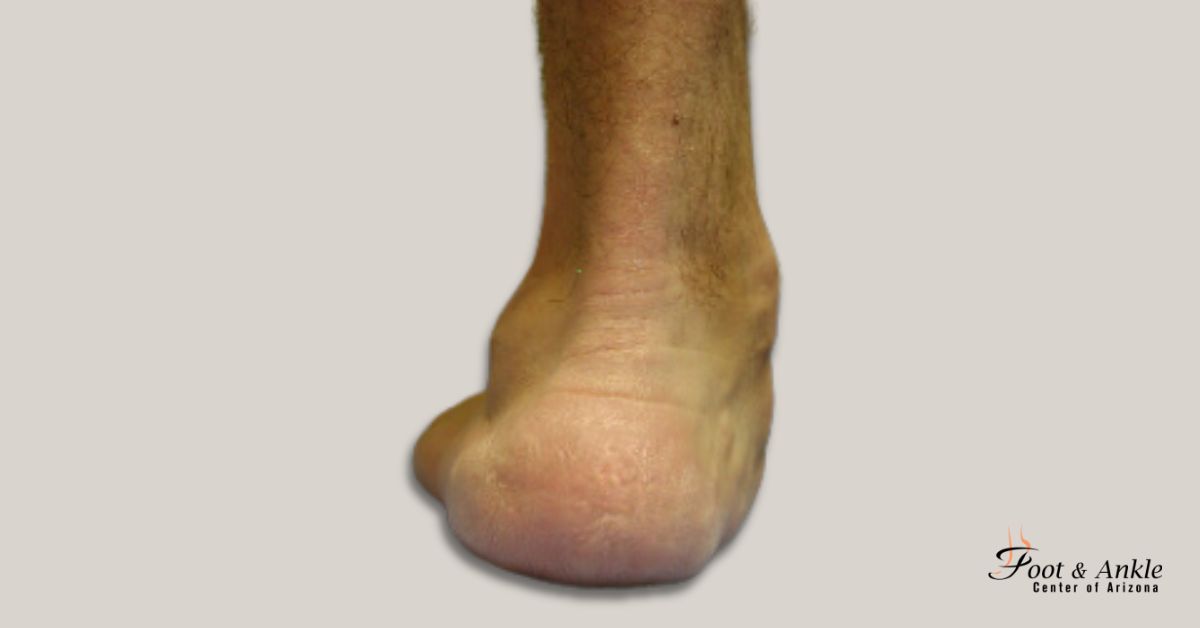
What is Adult Acquired Flatfoot Deformity?
Adult acquired flatfoot deformity (AAFD) is a progressive flattening of the foot's arch, often stemming from the wear and tear of the posterior tibial tendon. Also known as posterior tibial tendon dysfunction, this condition can lead to significant deformity and arthritis in the foot and ankle over time.
Anatomy
The posterior tibial tendon, originating in the lower leg, plays a crucial role in supporting the foot's arch during weight-bearing activities. Dysfunction of this tendon, along with the stretching of surrounding ligaments, contributes to the progressive flattening of the arch seen in AAFD patients.
Symptoms
Patients with AAFD may experience pain, swelling, and deformity around the ankle and hindfoot. As the condition progresses, the arch flattens, the heel shifts outward, and arthritis may develop. Pain may shift from the inside to the outside of the ankle as deformity worsens.
Causes
Posterior tibial tendon dysfunction is the primary cause of AAFD, often resulting from gradual wear and tear rather than a specific injury. Factors such as flat feet, excessive weight, and genetic predisposition can exacerbate this condition.
Diagnosis
Diagnosing AAFD involves a combination of symptoms assessment, physical examination, and X-rays. Our expert, Dr. Kris A. DiNucci, DPM, FACFAS, evaluates pain location, foot shape, flexibility, and gait patterns to determine the severity of the condition.
Treatments
Treatment options vary based on symptoms, deformity severity, and patient goals. Non-surgical interventions like rest, orthotics, braces, and physical therapy may suffice for early-stage AAFD. However, advanced cases may require surgical intervention, including tendon transfers, ligament repairs, bone realignment, and joint fusions.
Recovery
Recovery from AAFD treatment depends on the chosen approach, ranging from weeks to months. Non-operative treatments often involve immobilization followed by orthotic or brace use. Surgical procedures may require longer recovery periods, with complete improvement typically seen within 1-2 years post-surgery.
Contact Us
If you're experiencing symptoms of AAFD or have concerns about your foot health, contact the Foot and Ankle Center of Arizona at 480.342.9999. Our experienced team, led by Dr. Kris A. DiNucci, DPM, FACFAS, is here to provide expert diagnosis and personalized treatment options tailored to your needs.
Don't let adult acquired flatfoot deformity limit your mobility and quality of life. Schedule your consultation today and take the first step towards healthier feet!
Customer Feedback
At Foot and Ankle Center of Arizona, we take great pride in the positive feedback we receive from our patients. Their satisfaction is our top priority. And we strive to exceed their expectations with every interaction. Here are a few testimonials from our valued patients:
